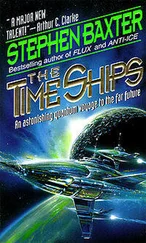But in the universe of Avatar , a physicist called Albert McKinney has found a way to do just that, by exploiting another quantum property called “tunneling.”
It may be that when we reach for the stars for real, we will have a better theory of physics than we have today. As Dirac and others have argued, relativity, the science of the very big and very fast, and quantum mechanics, the science of the very small, must one day be united in a “quantum gravity” theory, out of which may naturally fall faster-than-light communications, and indeed something like a warp drive.
But this is for a more distant future.
So we’ve come to the end of Venture Star ’s interstellar journey. The great engine has fired to slow us. The universe as seen from the observation dome has opened up like a flower in spring.
And laid out before us is a majestic spectacle: Alpha Centauri.
PART FOUR

PANDORA
“You are not in Kansas any more…”
—Colonel Miles Quaritch
The very first interstellar journey we make is likely to be, just as in Avatar , to our sun’s nearest neighbour.
Alpha Centauri is a triple star system. The two principal stars, known as A and B, are bound close together by gravity. The twins don’t orbit each other, but both circle a common centre of mass, just a point in space, following looping elliptical trajectories. Each of the two central suns is similar to our sun, A in particular, but these near-twin stars are no further apart than the planets in our solar system. Alpha B comes about as close to A as the planet Saturn does to the sun, though it loops out to Pluto’s distance.
Imagine standing on a planet orbiting A, the brighter star (as Polyphemus does). From here A looks like our sun in the sky. The companion, B, is a brilliant, orange-ish star. Even at its furthest distance from A, B is about two hundred times brighter than the full moon; at its closest it is over two thousand times as bright as the moon. In fact it shows a disc to a sharp enough naked eye.
And somewhere in the complex sky around you is Proxima, the third star in the system, orbiting the main binary pair four hundred times further away from those twins than they are from each other, trundling around an orbit that takes half a million years to complete. (Proxima is so far out that there’s some controversy about whether it’s really part of the Alpha system at all.) Proxima is actually the closest star of all to the sun, which is why it’s so named: like “approximate,” the name “Proxima” comes from a Latin root meaning “near.” Proxima is an unspectacular red dwarf, a minor component of this system—but of great interest to astronomers, for it is actually more representative of the Galaxy’s stars than either Alpha A or B, or indeed the sun; seventy per cent of stars are like Proxima.
You are here! Alpha Centauri: the first port of call beyond the sun’s realm.
As the closest star system, Alpha Centauri has, not surprisingly, featured in many starship studies, and fictional depictions of interstellar travel. For example there’s Leigh Brackett’s thrilling Alpha Centauri—Or Die! (1963), Encounter with Tiber (1996) co-written by moonwalker Buzz Aldrin with John Barnes, my own Space (2000)—and Footfall by Larry Niven and Jerry Pournelle (1985), about an invasion of Earth from Alpha Centauri, rather than the other way around as in Avatar. Avatar in fact seems to be the first depiction of the system in the movies, although it was the target for the hapless star travellers of the TV series Lost in Space (1965–8).
We’ve known Alpha Centauri is the closest star system for nearly two centuries now. This was established in 1832 by a Scottish astronomer called Thomas Henderson, working at an observatory in South Africa (Alpha Centauri is invisible from the northern hemisphere). He used a method called parallax. If you hold a finger up closely before your nose, and then inspect it through first one eye and then the other, you’ll see it apparently shift against the more distant background. If you know how far apart your eyes are, and you measure the apparent shift, you can do a bit of geometry to work out how far your finger is from your nose. This is the method Henderson used, scaled up a mere hundred thousand trillion times. He knew the diameter of Earth’s orbit around the sun, and by studying the way Alpha Centauri apparently shifted across the background of more distant stars as Earth crossed from one side of its orbit to the other in the course of a year, he was able to establish Alpha’s distance. Parallax was a well-established method at the time, having been used to measure the distances between the sun’s planets. But the interstellar distance Henderson worked out was so large it made him hesitate to publish his result; suddenly the universe was bigger than everybody had thought.
Even so, a starry night seen from Alpha Centauri might seem nostalgically familiar.
Of course if you stand on a world of Alpha A, because of the glare of B, you won’t get many dark starry nights. And if your world is a Pandora, a close-in moon of a giant planet, the glare of that primary world will crowd the sky even more—although you will get a spectacular show as the giant goes through its phases, and eclipses one or other of the suns.
With time however you’ll see B track slowly around the sky, like an outer planet in our solar system. Sometimes B will be in the “night sky” of A, and will banish the darkness. But when B is in the daytime sky, and especially when the suns are close together, they will act as if they are a single point of light, like our own solitary sun, and the day–night cycle will seem normal to a terrestrial like you. You may even see a very strange solar eclipse indeed—the eclipse of one sun by another, as B passes behind A.
And there will be a few nights, when the suns are close together and both below the horizon—and when your local Polyphemus has set too—when the distant stars will at last be visible.
You’re a mere four light years from home. If you look around the sky, just as you saw from Venture Star , the constellations are little changed, because most of the stars are much further away than that. But if you look back the way Venture Star came, you will see a compact constellation familiar to any amateur astronomer. That W shape is surely Cassiopeia, one of the most easily recognisable of our star figures. But there is an extra star to the left of the pattern, turning the constellation into a crude zigzag. That star is our sun: just a point of pale yellow light, bright, but not exceptionally so. And from where you stand, the sun, the Earth and all the planets, and all of human history before the first colonists left for Alpha Centauri, could be eclipsed by a grain of sand.
Alpha Centauri, then, is a spectacular place. But the key question is: are there planets? Could Pandora actually exist?
In the Avatar universe the geography of the Alpha Centauri system has been worked out in some detail.
All the three stars, Alpha Centauri A, B and C, have planets. Even C, the red dwarf, has a close-in gas giant and two rocky worlds. B has one gas giant and five rocky worlds, and an asteroid belt; B’s subsystem is perhaps most similar to our own solar system.
A, the largest star, has three gas giants and three rocky worlds. Polyphemus is one of the gas giants, with similar size and mass to Saturn in our system, though without the rings. It orbits at about the same radius from Alpha A as Earth does from the sun—unlike Saturn, which is about nine times further out from the sun than Earth. Interestingly, rather like the Trojan asteroids in our solar system (see Chapter 6), two rocky bodies share Polyphemus’ orbit, at points of gravitational stability sixty degrees ahead of and behind the planet: one significant rocky world and one planetoid. Polyphemus has fourteen moons (compared to Saturn’s astounding sixty-two, at the latest count, of which seven are spherical). All these (fictional) bodies have names, by the way. All of them await explorations of the imagination, in movies, books and comics…
Читать дальше











